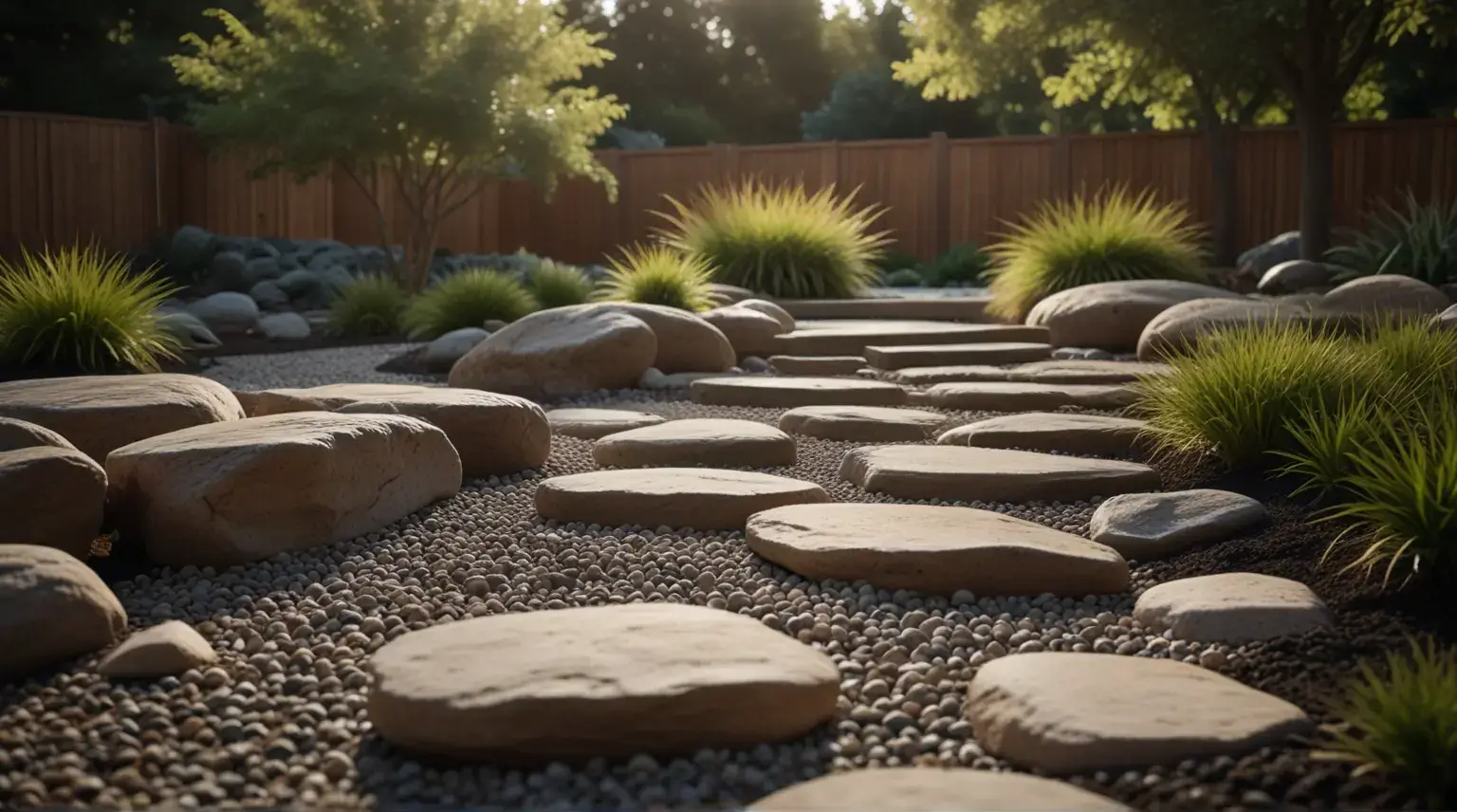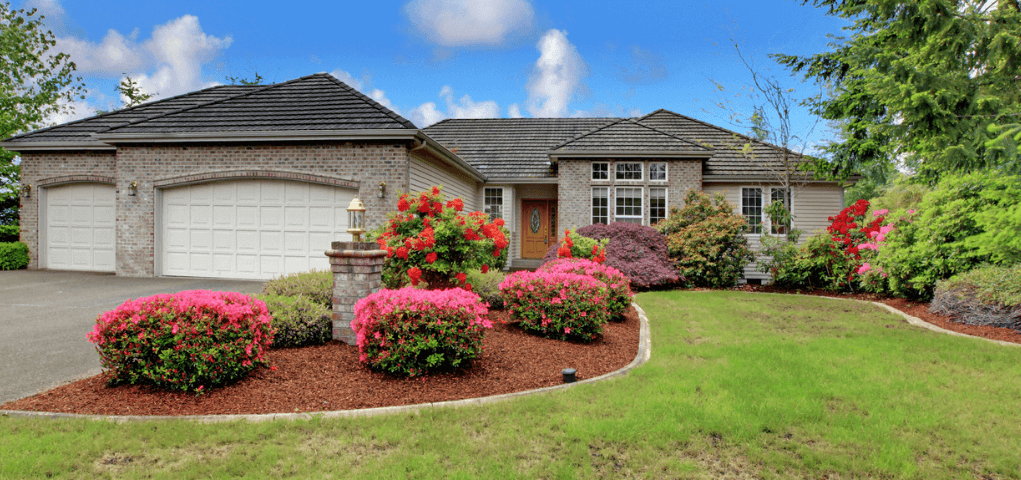Increasing the value of your home and improving curb appeal go hand in hand, especially when it comes to landscaping. A well-thought-out garden design can not only enhance the aesthetic appeal of your property but also contribute to its market value. By incorporating strategic landscaping tips, homeowners can create outdoor spaces that are both functional and beautiful, ultimately making their homes more attractive to potential buyers.
This article will provide essential landscaping tips that can help you boost your home value and curb appeal. We’ll cover key areas like plant selection, outdoor lighting, lawn care, hardscaping ideas, and much more.
Table of Contents
- Why Landscaping Matters for Home Value
- Key Landscaping Tips to Boost Curb Appeal
- Hardscaping Ideas to Elevate Your Yard
- Irrigation Systems and Landscape Maintenance
- Conclusion
1. Why Landscaping Matters for Home Value.
A well-maintained landscape can significantly increase the value of a home. Curb appeal, or how appealing a house looks from the street, is a major factor in a potential buyer’s first impression. A beautiful landscape can elevate a home’s visual appeal, potentially increasing its market value by up to 15%.
Moreover, landscaping provides more than just visual benefits. It offers functionality by creating outdoor living spaces, reducing energy costs through strategically placed trees, and improving environmental sustainability by utilizing eco-friendly gardening techniques. A home’s landscape is an investment that provides both immediate and long-term returns.
2. Key Benefits of Landscaping for Home Value:
- Enhances visual appeal.
- Increases marketability.
- Provides energy-saving benefits.
- Improves outdoor living spaces.
- Adds ecological value.
Key Landscaping Tips to Boost Curb Appeal.
Landscaping is a multi-faceted process that requires careful consideration of several elements, including plant selection, lawn care, garden design, and outdoor lighting. By focusing on these areas, you can significantly improve your home’s curb appeal.
a. Garden Design
A well-planned garden design is essential for creating a visually cohesive and functional outdoor space. It involves the thoughtful arrangement of plants, walkways, and other garden features to create an inviting and harmonious environment.
Key Garden Design Tips:
- Define Functional Areas: Create separate zones for relaxation, gardening, and entertainment. For example, a patio or deck area can serve as an outdoor living space, while flower beds and vegetable gardens can enhance the natural beauty of your yard.
- Incorporate Curved Pathways: Straight pathways can feel rigid and unnatural. Instead, opt for gently curving paths that lead to different areas of the garden, creating a sense of mystery and depth.
- Use Symmetry: Symmetry in garden design helps create a balanced look. For instance, placing identical plants or garden ornaments on either side of a walkway or entrance enhances visual appeal.

b. Plant Selection
Choosing the right plants is critical for both aesthetic appeal and functionality. Proper plant selection ensures that your garden remains vibrant throughout the year and requires minimal maintenance.
Key Plant Selection Tips:
- Opt for Native Plants:Native plants are adapted to the local climate and soil conditions, making them easier to care for and more resilient to pests and diseases.
- Choose Perennials Over Annuals: While annuals provide bursts of color, they only last one season. Perennials, on the other hand, return year after year and require less maintenance.
- Incorporate Evergreen Shrubs: Evergreens maintain their foliage year-round, providing a consistent and lush appearance, even in the colder months.
- Layer Plants: Use a variety of plant heights to create depth and visual interest. For example, taller shrubs or trees should be placed in the back, and shorter plants should be placed toward the front.
- Consider Seasonal Colors: Select plants that bloom in different seasons to ensure your garden remains colorful throughout the year.
c. Lawn Care
A healthy, green lawn is one of the most important aspects of curb appeal. A well-maintained lawn not only looks appealing but also provides a soft, welcoming surface for outdoor activities.
Key Lawn Care Tips:
- Regular Mowing: Mow the lawn regularly, but avoid cutting the grass too short, as this can stress the roots and lead to thinning.
- Water Properly: Water the lawn deeply but infrequently to encourage deep root growth. Early morning is the best time to water, as it minimizes evaporation.
- Fertilize and Aerate: Use a high-quality fertilizer to nourish the grass, and aerate the lawn to prevent soil compaction and improve water penetration.
- Control Weeds: Remove weeds regularly to maintain a healthy lawn. Using a pre-emergent weed killer can help prevent weeds from taking root.
- Edge the Lawn: A crisp edge between the lawn and garden beds provides a polished and professional look.
d. Outdoor Lighting
Outdoor lighting not only adds to the beauty of your landscape but also improves safety and security. Properly placed lighting highlights key features of your yard, such as walkways, trees, and garden beds, creating a warm and inviting atmosphere.
Key Outdoor Lighting Tips:
- Use Path Lighting: Install low-voltage lights along walkways and driveways to guide visitors safely while adding a subtle glow.
- Highlight Trees: Uplighting trees with spotlights can create dramatic focal points and add depth to the landscape.
- Incorporate Solar Lighting: Solar-powered lights are an eco-friendly option that reduces energy costs while providing soft illumination.
- Use Timers: Install timers on outdoor lights to ensure they turn on and off automatically, saving energy and ensuring your home is always well-lit.
- Accent Lighting for Water Features: If you have a fountain, pond, or pool, consider adding underwater lights or spotlights to enhance the visual appeal at night.

3. Hardscaping Ideas to Elevate Your Yard
Hardscaping refers to the non-living elements of your landscape, such as patios, walkways, retaining walls, and fences. Incorporating hardscaping elements can add structure and functionality to your outdoor space, making it more usable and aesthetically pleasing.
Popular Hardscaping Ideas:
- Stone Pathways: Create meandering stone pathways that lead to different areas of the garden, adding texture and visual interest.
- Retaining Walls: Build retaining walls to manage slopes or create raised garden beds. This not only adds a unique architectural element but also prevents soil erosion.
- Patios and Decks: Expand your living space by adding a patio or deck. Use materials like flagstone, pavers, or wood to create a durable and attractive surface for outdoor seating and dining.
- Fire Pits: Fire pits are a popular feature that can serve as a gathering place for family and friends. Consider a built-in stone fire pit for a permanent and stylish addition to your yard.
- Fencing and Gates: Adding decorative fencing or gates can define your garden space and provide privacy.
4. Irrigation Systems and Landscape Maintenance
Proper irrigation and regular landscape maintenance are essential for keeping your yard looking its best. An efficient irrigation system ensures that plants receive the right amount of water without wasting resources, while consistent maintenance keeps your landscape healthy and thriving.
Irrigation System Tips:
- Install a Drip Irrigation System: Drip irrigation delivers water directly to the roots of plants, reducing water waste and ensuring even distribution.
- Use Timers and Sensors: Set up timers or moisture sensors to automate your irrigation system, preventing overwatering or underwatering.
- Mulching: Mulch helps retain moisture in the soil, suppress weeds, and regulate soil temperature. Apply mulch around plants to reduce the need for frequent watering.
Landscape Maintenance Tips:
- Prune Regularly: Trim trees, shrubs, and hedges to maintain their shape and encourage healthy growth.
- Fertilize Plants: Use a balanced fertilizer to feed your plants and promote lush growth.
- Remove Dead Plants: Regularly remove dead or diseased plants to prevent the spread of pests and maintain the overall health of your garden.
- Maintain Hardscape Features: Clean and repair hardscape elements such as patios, walkways, and retaining walls to prevent deterioration and keep them looking new.
- Seasonal Clean-Up: Perform a thorough clean-up at the start of each season, removing fallen leaves, debris, and dead plants.
5. Conclusion
Improving your home’s curb appeal through strategic landscaping not only makes your property more visually appealing but also significantly boosts its value. By focusing on key areas like garden design, plant selection, lawn care, outdoor lighting, and hardscaping, you can create an outdoor space that is both functional and beautiful. Remember to maintain your landscape regularly and invest in a proper irrigation system to keep your yard looking pristine year-round.
Incorporating these essential landscaping tips will help you create a stunning outdoor environment that enhances both the curb appeal and the value of your home.





